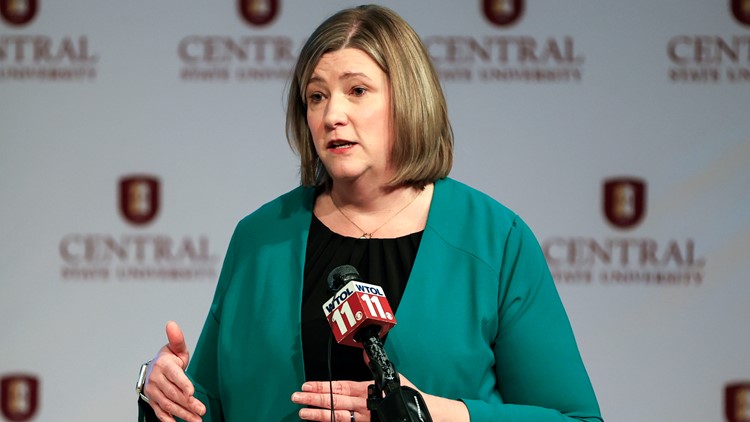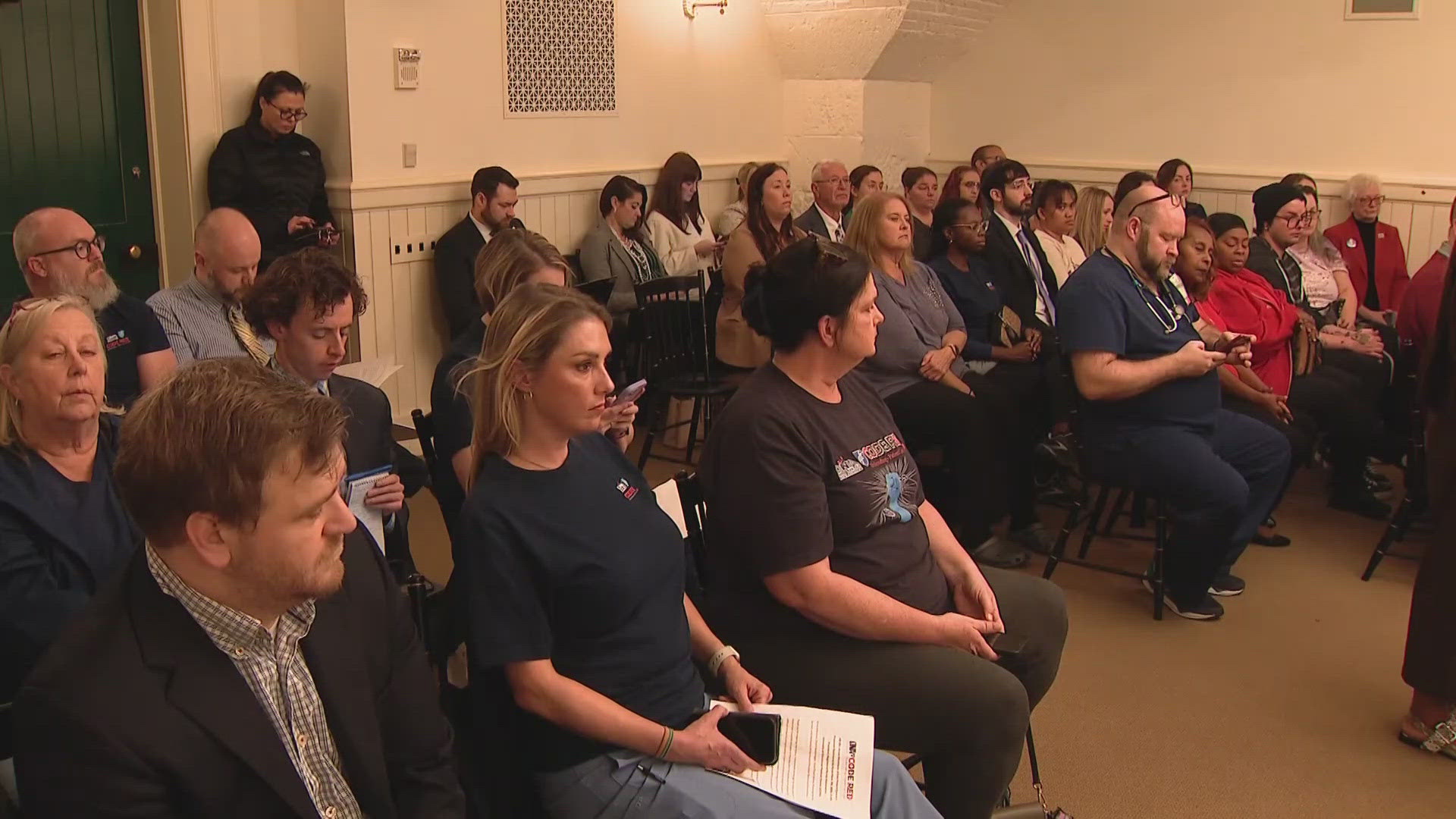COLUMBUS, Ohio — Democratic governor nominee Nan Whaley is promising $350 checks to help Ohioans manage the rising cost of gas, groceries and other essentials. But with some economists pointing to federal stimulus as one of the drivers of inflation, her plan may not sit well with them.
Whaley’s plan would take the $2.68 billion in American Rescue Plan dollars earmarked for Ohio and hand it out to residents directly. Checks would go to the same people who received federal stimulus checks — $350 per individual or $700 per couple.
“We need to use this money to help Ohio families, full stop,” Whaley argued.
“This isn’t rocket science,” she continued. “We need common sense solutions to help folks struggling with rising costs.”
Whaley argued those rising costs are especially difficult for those living on fixed incomes, and she brought along retired furniture worker Ron Sawyer to help make the point. Sawyer lives in Cleveland, and he joked that after having seven kids of his own he has too many grandkids to count.
“Most of the seniors in this country, and even the people in this country, (do) not have enough money to meet today’s challenge with prices. They’re completely out of this world,” he said. “Everything from gas to food to health insurance to water to sewer, they’ve jacked up everything. Most people cannot survive without help from other organizations.”
While inflation remains high, many of those who opposed federal stimulus checks now argue that spending fueled rising prices by flooding the market with money.
Research from the Federal Reserve Bank of San Francisco gives some credence to that view. A recent report comparing the U.S economy to Canada and a handful of European economies suggested about 3 percentage points of inflation could be chalked up to direct payments.
Still, the authors warn against completely rejecting aggressive economic intervention. They caution that ongoing waves of infections and supply chain breakdowns have slowed recovery, but the immediate term rebounds in unemployment and GDP shouldn’t be dismissed.
“Without these spending measures,” they write, “the economy might have tipped into outright deflation and slower economic growth, the consequences of which would have been harder to manage.”
Whaley laid some of the blame for higher gas prices at the feet of oil companies that she contends are gouging consumers. She also noted other states have proposed stimulus programs of their own. And with the money already appropriated, Whaley argued, sending it directly to citizens is the best way to dole it out.
“The best way for making sure that we take care of people is make sure we give it directly to them, because they know what they need for immediate help,” Whaley said. “That will be actually more helpful than a bunch of bureaucrats deciding what to do with this money.”
For decades, the assertion that Americans know best how to spend their money has been a bedrock conservative argument for tax cuts. And while many congressional Republicans howled at spending more money on COVID-19 relief in the American Rescue Plan, once dollars began flowing, some states began to use the influx of dollars to hand out tax cuts, including in Ohio.
As drafted, the rescue plan barred states from using dollars to fund tax cuts, but a lawsuit filed by Ohio Attorney General Dave Yost and several other AGs resulted in a permanent injunction which blocked federal officials from enforcing the provision.



